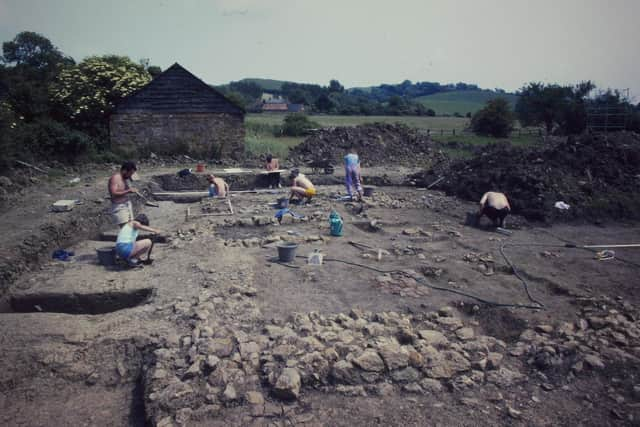New book highlights county's medieval past after unearthing of a village near Burton Dassett
and live on Freeview channel 276
A new book sheds light on the founding and eventual desertion of a medieval village in Warwickshire.
The book – Burton Dassett Southend, Warwickshire – A Medieval Market Village (Routledge) by Nicholas Palmer and Jonathan Parkhouse – describes the results of an archaeological excavation that took place in advance of the construction of the M40 through Warwickshire in the late 1980s.
Advertisement
Hide AdAdvertisement
Hide Ad

The excavation work was carried out by the Warwickshire County Council Museum Service and the report has been financed by Historic England.
It describes the archaeological evidence for the founding and desertion of the medieval village of Southend, one of five medieval settlements in Burton Dassett parish.
It includes the site of a market promoted by the manorial lord Bartholomew de Sudeley, with a charter obtained in 1267. The settlement initially prospered but declined throughout the 15th century and is recorded as depopulated by 1497.
Southend survived as earthworks in pasture until construction of the M40 motorway prompted its archaeological excavation.
Advertisement
Hide AdAdvertisement
Hide AdThe only building in the village to survive was the 13th-century chapel of St James, reduced, along with an adjacent post-medieval priest’s house, to a cowshed until conversion in the 1990s.
The open area excavations at Southend investigated parts of ten medieval properties. The main period of occupation lasted from the mid-13th century to the late 15th century.
More than 20 complete plans of houses and outbuildings were recorded, mostly in stone, but exhibiting a range of building techniques and representing the largest such site ever examined in the Midlands.
The well-preserved remains, protected under demolition rubble, included a door jamb, inscribed with the name of a tenant family ‘Gormand’, which suggests a degree of functional literacy for the tenants that could not previously have been assumed.
Advertisement
Hide AdAdvertisement
Hide AdOne of the identified properties was recognised as a smithy during the excavation and a pioneering sampling and analysis of the ironworking evidence was carried out.
The site was also sampled extensively for charred plant remains and, unusually for Warwickshire with its slightly acid soils, a large assemblage of animal bone was collected.
Work on these provides direct evidence of medieval agricultural practice, to be compared with the local historical evidence. The large quantities of finds recovered, probably the largest assemblage from a medieval rural settlement in the West Midlands, enabled the reconstruction of the material culture of the late medieval village.
The excavation, the largest every carried out by Warwickshire County Council, has led to one of the most anticipated reports in the authority’s history. The book detailing the excavation is already tipped to be one of the seminal research tools for students and practitioners of medieval history and archaeology in the UK.
Advertisement
Hide AdAdvertisement
Hide AdCllr Heather Timms, portfolio holder for heritage, culture and the environment, said: “There have been few finds as monumental as that of Southend at Burton Dassett and the learning about medieval life in Warwickshire has added to our better understanding of this period in Warwickshire and the wider region.”
Burton Dassett Southend, Warwickshire – A Medieval Market Village is available at major book retailers.
